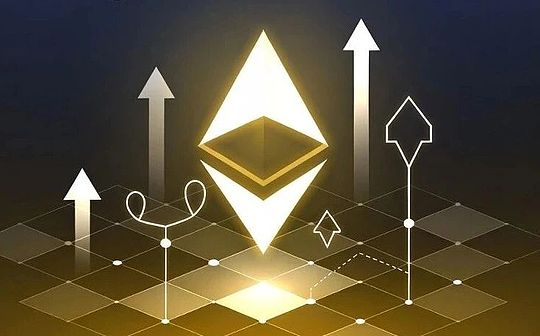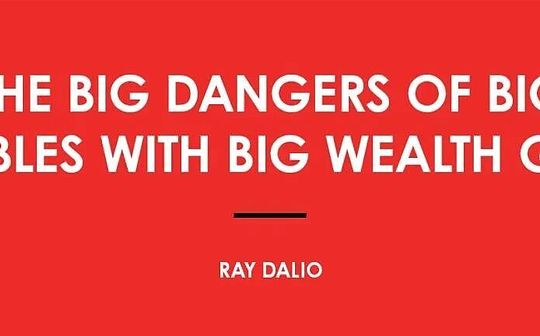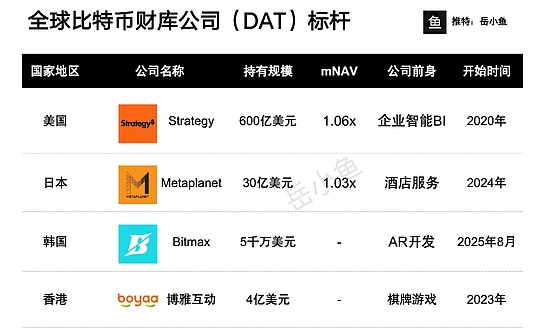
Author: Four Pillars Source: X, @FourPillarsFP Translation: Shan Oppa, Bitchain Vision
Key Points
At the 2024 Devcon Conference, Ethereum proposedBeam ChainProposal aims to enhance network performance and security with the following improvements:
-
Reduce the block generation time from 12 seconds to 4 seconds;
-
Reduce the minimum staking requirement from 32 ETH to 1 ETH;
-
Extend the application of zero-knowledge technology (ZK);
-
Significantly increase gas limit (10-100-fold increase).
Although the proposal was praised as an important move to improve scalability and decentralization, it has sparked widespread criticism due to insufficient community engagement during the launch process and a slow target schedule (the target completion time is 2029).
The Beam Chain proposal demonstrates significant progress in efficiency and decentralization, but Ethereum community and industry experts expressed disappointment after the announcement.The main issues focus on the following aspects:
-
The timetable is too long, unable to quickly respond to the rapid changes in the blockchain industry;
-
Lack of agility and innovation, may weaken Ethereum’s competitiveness.
José Maria Macedo of Delphi Ventures and Mert of Solana’s Helius development platform expressed concerns about Beam Chain’s lack of competitiveness and slow progress.Péter of the Ethereum Foundation and Cygaar of Abstract stressed that taking into account technological stability and governance risks is necessary to adopt a careful and phased plan.
As a leading blockchain ecosystem, Ethereum needs to revisit its strategy to maintain community trust and maintain a competitive advantage in a rapidly growing industry.The Beam Chain proposal demonstrates the potential of Ethereum, and also reminds it to balance decentralization and rapid innovation.
1. Background – Ethereum Beam Chain
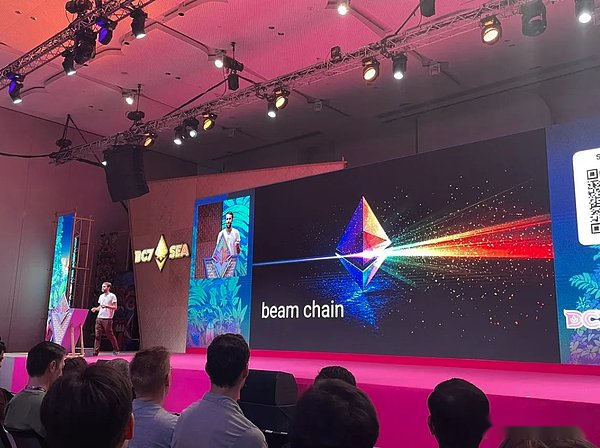
Devcon 2024, held in Bangkok, Thailand, became a high-profile event from November 12 to 15, 2024.Ethereum Foundation researcher Justin Drake introduced it at the meetingBeam Chainproposal.
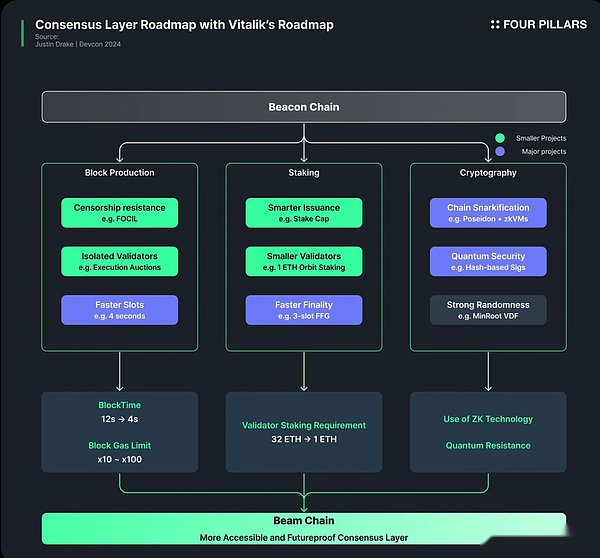
In his speech, Drake painted the future plans of Ethereum and proposed to replace or improve existing Beacon Chain through Beam Chain to improve network performance and security.These improvements include:
-
Extended application of zero-knowledge virtual machine (ZK-VM);
-
Shorten the slot time;
-
escalation measures such as increasing gas restrictions.
According to the event site andThe Rollup YouTube ChannelIntroducing, the main features of Beam Chain are as follows:
Main features
-
Faster block generation time:
Reduce the Ethereum block generation time from about 12 seconds to 4 seconds, improving transaction throughput and network efficiency. -
Lower threshold for staking of verifiers:
Reduce the minimum staking requirement from 32 ETH to 1 ETH, encouraging more users to participate in network verification. -
Actively apply ZK technology:
Based on the move from PoW to PoS, Beam Chain integrates ZK technology, leveraging the ZK proof of each block to provide higher security and scalability, and build an environment that is worthy of the trust of users and developers. -
Higher gas limit:
Beam Chain proposes to increase the current limit of Ethereum’s 30 million gas per block by 10 to 100 times to accommodate more transactions and significantly enhance the scalability of the network.Drake stressed that this is a key step in Ethereum’s competition with other Layer 1 blockchains. -
Stronger L2 interoperability:
Beam Chain aims to improve interoperability between Layer 1 and Layer 2.By introducing single-slot finality, the transaction processing delay problem caused by L2’s dependence on L1 block confirmation is solved, thereby accelerating and enhancing the operation efficiency and security of L2. -
Resisting quantum computing attacks:
Proposals include security protection measures against future quantum computing threats. -
$ETH valuation model:
Drake proposed a long-term valuation framework for Ethereum, based on two core elements: -
ETH’s fee cycle(From the Internet expense income);
-
Currency premium(As a role as a reliable store of value tool).
He believes these factors are the basis of Ethereum’s continued value.
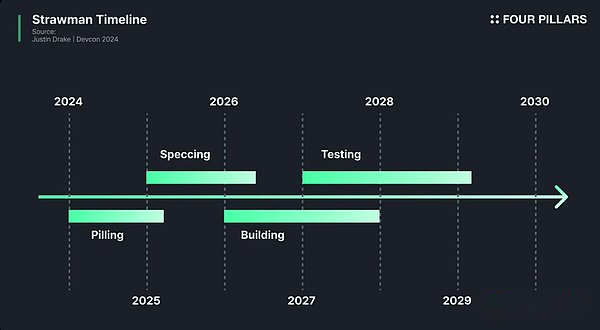
Drake explained that Beam Chain’s goal is to solve the problems found in Ethereum’s current Beacon Chain design and emphasized that community consensus is the key to the implementation of the proposal.
According to the schedule, initial specification work may start as early as next year, with subsequent:
-
2026: Start development;
-
2027: Comprehensive testing phase;
-
At least two years of stability verification.
Under the plan, the official launch of Beam Chain is expected to be completed in 2029.
2. Main Reapations – Ethereum and Beam Chain: Glory and Shadow
Since its launch in 2015, Ethereum has continuously upgraded its systems through hard forks.An important milestone isThe Merge”, that is, the consensus mechanism of moving from Proof of Work (PoW) to Proof of Stake (PoS), which marks the entry of Ethereum is commonly known asEthereum 2.0stage.The subsequent upgrade (such asShapellaandDencun) aims to improve network efficiency and user experience, but these updates have not brought about revolutionary changes, making the community look forward to more transformative improvements.
The launch of Beam Chain is just right, and it has attracted widespread attention to Ethereum itself and brings important internal milestones to it as the community is tired of over-focusing on L2 solutions and external developments.interest.
In addition, Beam Chain as EthereumPost-2.0 development roadmappart of theEthereum 3.0”, which further enhances the significance of the announcement. However, Justin Drake made it clear that Beam Chain is limited to improvements in the consensus layer and has nothing to do with the execution layer, so calling it Ethereum 3.0 is not entirely accurate.
Highlights of Beam Chain
There are many aspects to be affirmed in the Beam Chain proposal, especially in improving the consensus layer, improving network efficiency and decentralization.Here are some key elements:
-
Faster block generation time
-
Many competing Layer 1 blockchains have long achieved shorter block generation times, while Ethereum has shortened block generation time from 12 seconds to 4 seconds, marking a catch-up to this trend.
-
Although still slower than Solana, it shows that Ethereum is moving away from past attitudes of sacrificing speed for stability, reflecting an important shift.
-
Increase block gas limit
-
Increase the gas limit per block by 10 to 100 times, this improvement is particularly attractive to users, developers and L2 projects.
-
Higher gas limits allow each block to accommodate more data, significantly enhancing Ethereum’s availability and versatility.
-
Lower the threshold for staking by verifiers
-
Currently becoming a validator requires a minimum 32 ETH stake, which equates to approximately $100,000 (as of November 19, 2024), a high threshold that has discouraged many individual participants.
-
This has also led to the rise of liquid staking platforms such as Lido and Rocket Pool, which have instead concentrated staking activities within their ecosystem.
-
Beam Chain lowered the minimum staking requirement to 1 ETH, which is expected to allow more individuals to directly participate in verification and further promote the decentralization of the Ethereum network.
However, the Beam Chain proposal was not fully affirmed.While Ethereum’s price stagnation may be one of the reasons, the bland community response also revealed deeper concerns.
The proposed changes address the pressing issues that Ethereum needs to be addressed, so individual suggestions themselves are not flawed.The problem is the lack of a coherent narrative about the direction of Ethereum—a advantage that has guided the development of Ethereum.This lack disappoints many people.
Additionally, the roadmap has a slow schedule and the goal is to be launched in 2029, which is inconsistent with the pace of rapid development of the blockchain industry.This raises questions about whether the Ethereum Foundation fully understands the urgency of maintaining relevance in such a dynamic environment.While the Beam Chain proposal contains elements of innovation, its long timeline has left some wondering whether Ethereum has the ability to adapt quickly to remain competitive.
On one of the Telegram channels I often follow, there is a comment that resonates with me:
“If Ethereum’s goal was to advocate decentralization, why didn’t this be presented clearly and transparently from the beginning? The Ethereum community and EIP framework have long been formed, why is there so little transparency in preparing and publishing this proposal?”
— (ABCDEF) AI & Blockchain Daily Expertise Forum
I totally agree with this view.Since its inception, Ethereum has always put decentralization at its core, even at the expense of scalability.However, the feedback collection and release process of Beam Chain’s proposal seems to be contrary to this principle.
One of Ethereum’s biggest strengths is its vast and active community, and the rich creativity generated in its EIP ecosystem.By bypassing these channels and having the Ethereum Foundation unilaterally decide and announce its next blueprint, this process could undermine the momentum of the community and reduce the value of the EIP system.
In addition, proposals formulated internally without public discussion may not be included in the views of actual users and developers of the Ethereum network.The result may be a situation similar to a situation where a tyrannical company ignores customer feedback and ultimately loses its competitiveness in the industry.
Beam Chain’s announcement has attracted sharp criticism from many well-known figures in the blockchain field and community members.However, such fierce criticism shows that people still have high expectations for Ethereum.After all, criticism is a form of participation—those who don’t care won’t bother expressing their concerns.
Of course, the heavy responsibility lies on your shoulders.As a leader in smart contract platforms and pioneer in the Web3 ecosystem, Ethereum must face every obstacle and constantly prove itself.It requires careful listening to the sharpest criticisms and ensuring that every idea in the EIP framework, no matter how small, is not wasted.
Ethereum is a blockchain network that I personally support and a super-large project with a strong narrative.However, even such projects are inevitably complacent or lose their advantage when facing competition.In this rapidly changing industry, even a moment of slackness can lead to being left behind.
Crisis is inevitable, and everyone will encounter challenges at some point.How Ethereum responds to the current challenges will be a key turning point that determines it isrevivalstillGradually forgotten.
3. Other people’s opinions
3.1 José Maria Macedo (Delphi Labs) – Disappointment with Beam Chain
José Maria Macedo, founding partner of Delphi Ventures, expressed disappointment with the Beam Chain proposal.He criticized the proposal for its core improvements, only the reorganization of the code base, the 4-second block time, and the “quantum attack resistance” feature.
Furthermore, he noted that these improvements are not expected to be achieved until 2029-2030.He believes that this gradual change is not enough to allow Ethereum L1 to maintain a leading position in blockchain competition, nor is it enough to achieve long-term competitiveness.
3.2 Mert (Helius)——Beam Chain Lack of competitiveness
Mert, CEO of Solana development platform Helius, also expressed concerns about Beam Chain’s development schedule.He predicts that if Beam Chain is not released until 2029, Ethereum will be difficult to maintain its competitiveness in the rapidly growing blockchain field.
3.3 Péter (Ethereum Foundation) – Ethereum’s progressive improvements
Péter, a core member of the Ethereum Foundation, raised different concerns about the Beam Chain proposal.He believes the proposal tries to tie too many changes together, which increases the likelihood of mistakes from a technical point of view.
From a governance standpoint, he warned that this approach may ignore details and cause controversy.He suggested that simple improvements should be implemented on Beacon Chain first, and more complex changes should be introduced step by step.
3.4 Cygaar (Abstract) – Enough time to ensure a safe transition
Abstract’s developer Cygaar stressed the need for a five-year schedule for Beam Chain.He pointed out that Ethereum, as the world’s second largest blockchain, carries $60 billion in TVL (total locked value), $400 billion in asset value, and thousands of applications relying on its network.
Implementing large-scale changes in such a decentralized and real-time ecosystem is extremely risky, so thorough preparation and testing are essential.He believes that only when enough time is invested can these changes be introduced in a safe and responsible manner.

